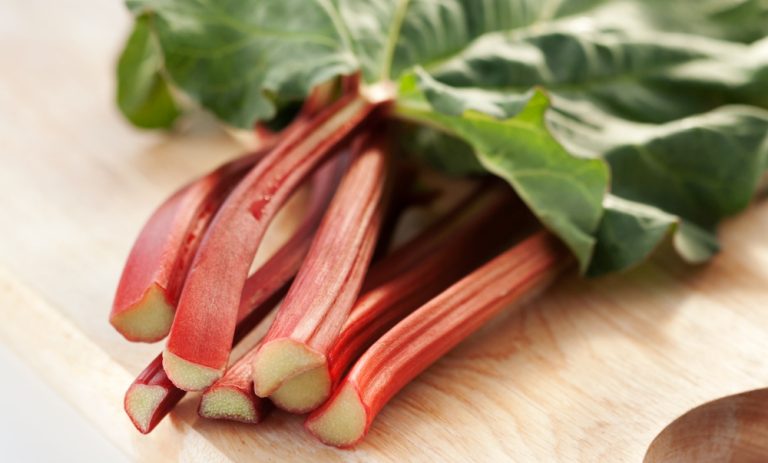Can you eat rhubarb raw? Opinions differ on this question. Here you can find out whether raw rhubarb is poisonous or harmless.
A common piece of advice is that raw rhubarb should be cooked before eating. The fact is that raw rhubarb contains a lot of oxalic acid. This is a naturally occurring fruit acid that can be harmful to the body. When rhubarb is cooked, much of this oxalic acid migrates into the water and thus disappears from the vegetable.
However, rhubarb itself is not poisonous and oxalic acid is not harmful per se. We explain why this is so and in what quantities you can eat raw rhubarb.
Eating rhubarb raw – unhealthy or healthy?

In fact, the human body itself produces oxalic acid during certain metabolic processes. We also absorb them every day from many plant-based foods – not just from rhubarb. This is what oxalic acid does:
In the body, oxalic acid combines with minerals such as calcium, potassium, sodium, magnesium or ammonium. As a result, these can only be absorbed by the intestinal mucosa to a limited extent or are withdrawn from the body.
The combination of oxalic acid and calcium in particular can prove problematic. The crystals it forms can eventually deposit and lead to kidney stones. They also reduce the absorption of nutrients from food.
In particular, the absorption of iron in the intestine can be inhibited. If you are prone to kidney stones or iron deficiency, you should (temporarily) avoid foods that contain a lot of oxalic acid or only consume them in very small amounts.
Important: If in doubt, you should seek medical advice and clarify whether you can eat foods high in oxalic acid, such as rhubarb, raw or even eat them at all.
Recommendation: Only eat raw rhubarb in small quantities

Raw rhubarb is therefore only toxic to the body in a few cases. Above all, it depends on how much raw rhubarb you eat and how ripe it is:
You can easily enjoy one or two stalks of raw rhubarb.
But make sure that you eat red stalks if possible: the riper the rhubarb, the less oxalic acid it contains. Incidentally, the rhubarb leaves contain the most oxalic acid – so you should never eat them raw.
If you eat (raw) rhubarb together with dairy products, the oxalic acid is better processed by the body. In this way, it combines with the calcium in milk and not in the body.
Do you know that furry feeling on your teeth after eating rhubarb? It occurs because oxalic acid and calcium react with each other in the mouth and their compounds are deposited on the teeth. This attacks your tooth enamel. Therefore, after eating rhubarb, you should wait 30 to 60 minutes to brush your teeth.
If you want to eat rhubarb raw and still want to reduce the oxalic acid, you can peel the rhubarb.
By the way: If you don’t cook rhubarb, many good nutrients are retained. For example, rhubarb is high in vitamin C.



